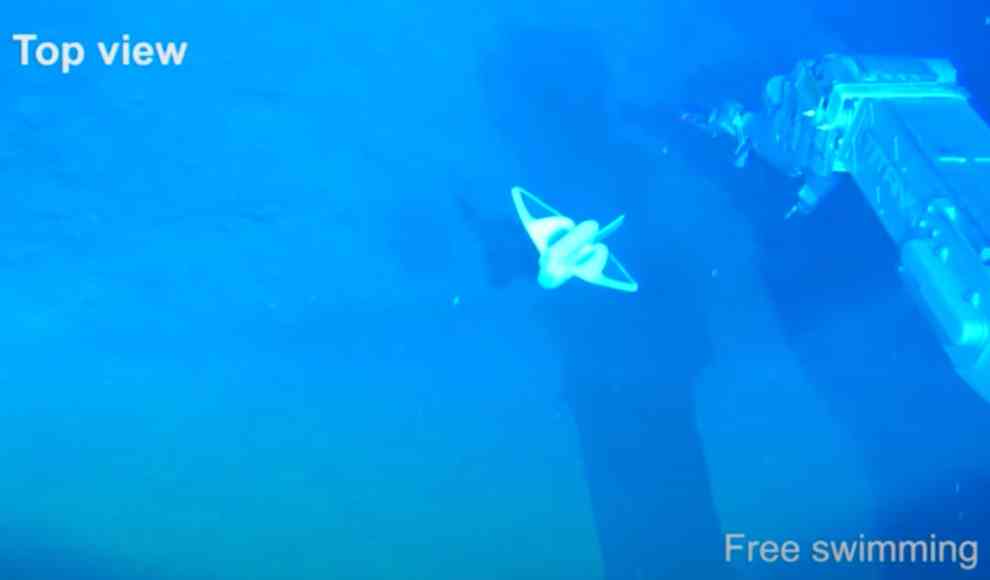A bionic robot in the shape of a ray has withstood extreme water pressures of over 100 megapascals in the Mariana Trench, opening up new possibilities for deep-sea exploration. In 1961, Jacques Piccard and US Navy Lieutenant Don Walsh successfully descended to 10,916 meters in the Mariana Trench in the Trieste submarine. Since then, only heavy steel-hulled submarines have been able to withstand water pressure of over 100 megapascals to explore the deep sea. However, new bionic robot rays could make deep-sea exploration much easier. Researchers from China have reported in the journal Nature about a small prototype that survived the dive into the Mariana Trench due to its soft structure and was able to ascend again with a novel propulsion system.
The new prototype, developed by Tiefeng Li and his colleagues at Zhejiang University in Hangzhou, resembles a small ray. It is made of flexible silicone rubber and has a wingspan of 28 centimeters, about the size of an A4 sheet of paper. It is powered by artificial muscles made of an electroactive plastic that can contract and relax periodically with electrical impulses from an integrated battery. Thanks to the resulting wing beats, the robot can swim about five centimeters per second. Li and his colleagues had to protect the sensitive control electronics from high water pressures. These devices were distributed throughout the silicone body of the robot to protect them from damage. To detect changes in water pressure, a novel pressure-resistant electronic circuit had to be developed. The team used the deep-sea fish Pseudoliparis swirei as a model for an elastic body that was integrated into the robot, and distributed the pressure sensor over its skull.
The researchers tested the stability of their electronics in three essential steps. First, they let their prototype swim in a high-pressure water tank in the laboratory. Then, field tests were conducted in the Chinese Sea at a depth of about 3,200 meters, and finally in the Mariana Trench at a depth of over 11,000 meters. In all tests, the electronics remained completely intact. Scientists want to send a robot ray the size of an octopus into the deepest depths of the ocean. But before they do, they need to figure out how to make the propulsion system more efficient. Currently, even small currents are enough to quickly throw the robot ray off course.








